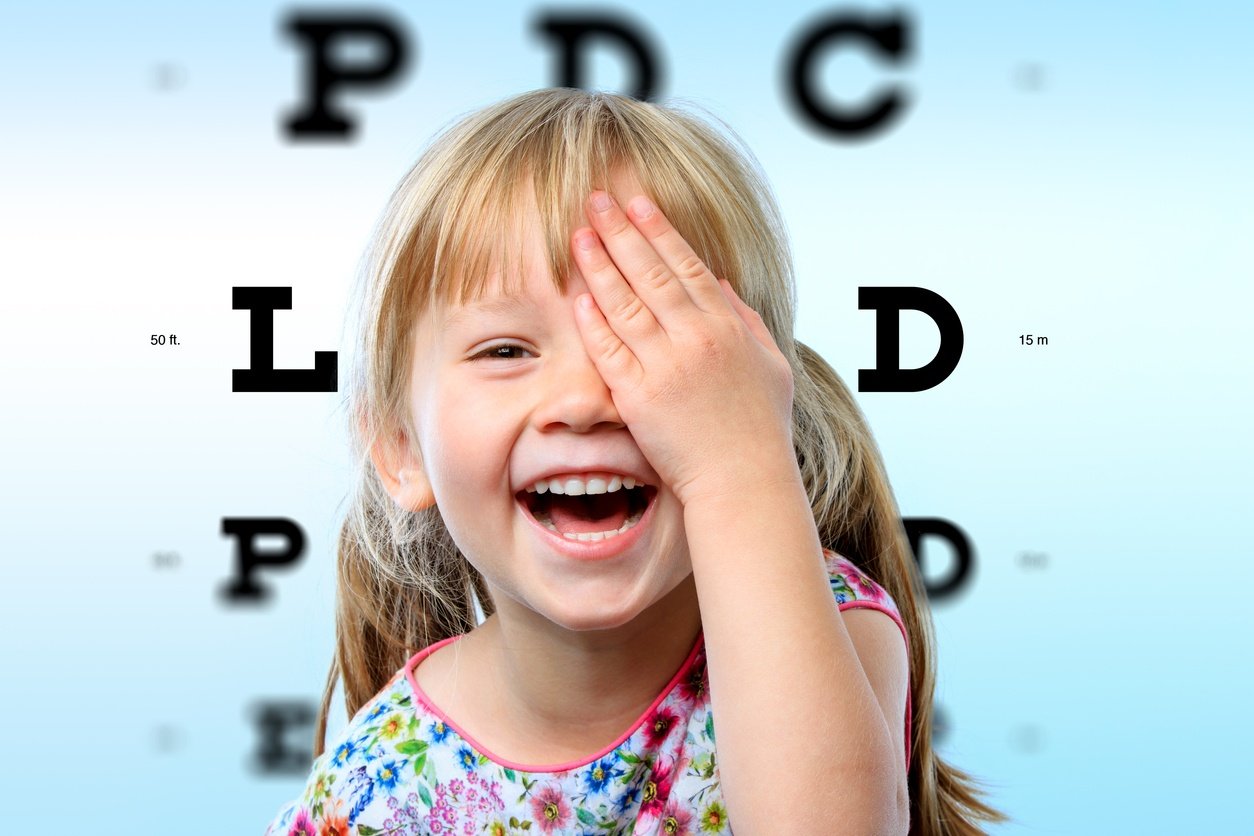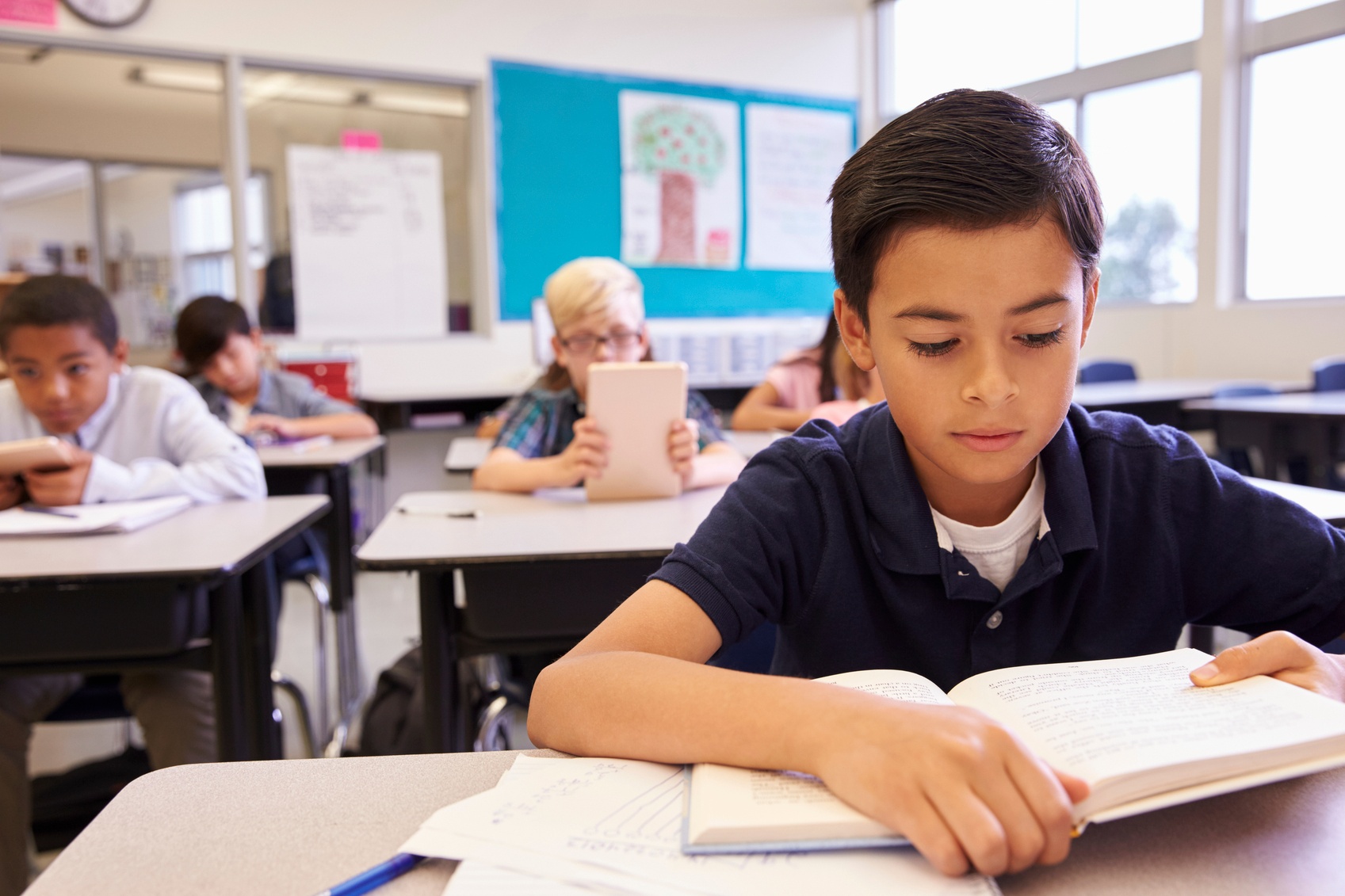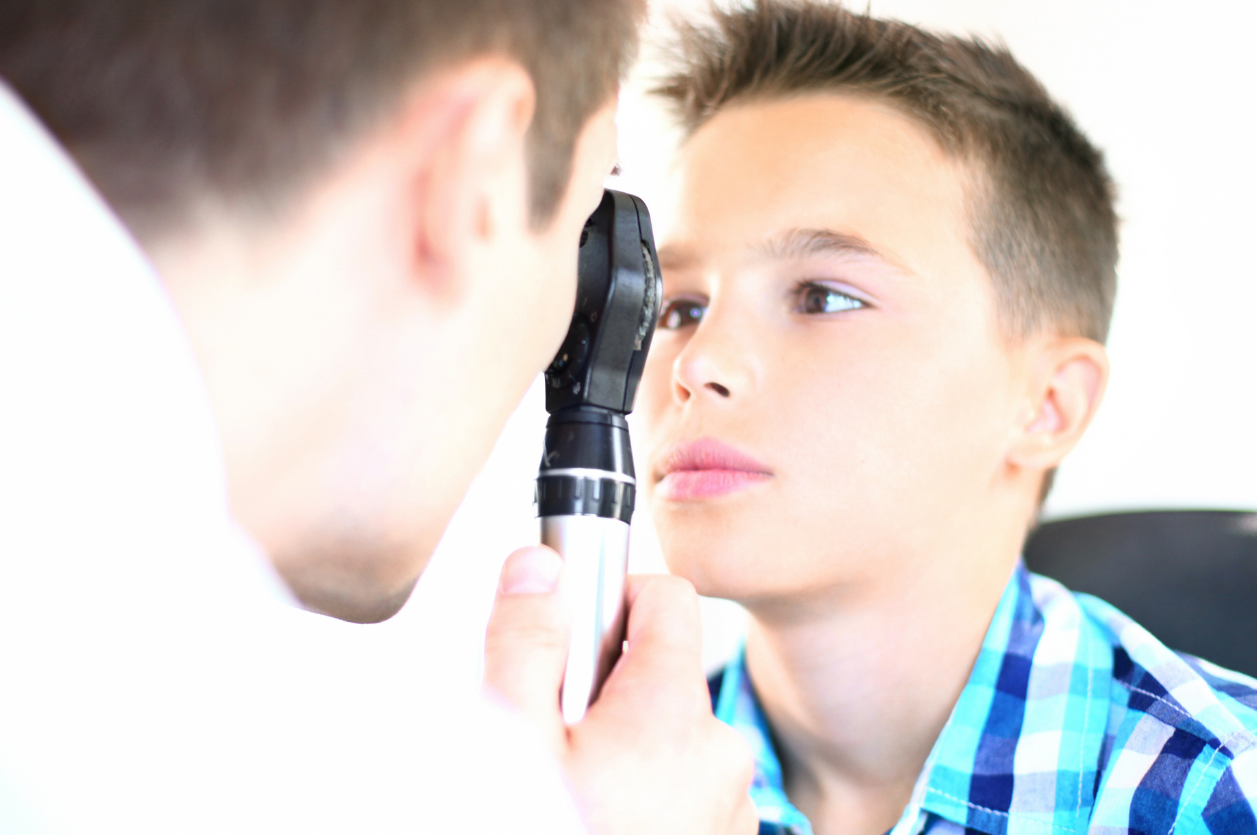Common Eye Problems in Children
Healthy vision is a critical part of every child’s development. This requires regular eye exams to ensure they have sound vision and that any problems are detected and treated early.
We recommend exams for visual acuity at ages 3 and 5 with your child’s pediatrician. Note, too, that the first person to recognize concerns may well be your child’s teacher, based on observation of your child’s behavior in class.
Signs of Vision Problems
 Signs to watch for at school include difficulty reading the board at the front of class, squinting to see distant objects, and difficulty reading. At home it could show up as sitting too close to the television, rubbing their eyes, chronic tearing, or redness. In very young children you might encounter extreme light sensitivity, trouble tracking an object with their eyes, and abnormal alignment or movement.
Signs to watch for at school include difficulty reading the board at the front of class, squinting to see distant objects, and difficulty reading. At home it could show up as sitting too close to the television, rubbing their eyes, chronic tearing, or redness. In very young children you might encounter extreme light sensitivity, trouble tracking an object with their eyes, and abnormal alignment or movement.
Common Eye Problems
Here’s a quick rundown of some of the more common eye problems in children:
Conjunctivitis. This is an infection caused by either a virus or bacteria, which is highly contagious. Or it could be caused by an allergic reaction. The eyes are red or pink due to inflammation of the membrane that covers the inside of the eyelids and white part of the eye, the conjunctiva. It’s also known as pink-eye.
Chalazion. This is a small lump on the eyelid generally caused by a gland becoming clogged. They usually clear up over time, but a hot compresses can help.
Cellulitis. This is a rapidly spreading infection usually caused by a staph or strep infection. It can start in the sinuses or skin and spread to the eyes. With cellulitis, you’ll need to see your doctor at once for treatment, usually antibiotics. Left untreated it can lead to serious harm.
Blocked Tear Duct. Here the drainage system for tears is blocked, either partially or completely. This leads to watery eyes and infections. Roughly 20% of babies are born with this but it usually resolves itself within four to six months.
Amblyopia. Often called lazy eye, amblyopia occurs when one eye is stronger than the other. Early detection is vital to provide the necessary treatment to help develop vision in both eyes.
Strabismus. Refers to misalignment of the eyes, sometimes called cross eyes. Treatment can include prescription glasses, vision therapy, or muscle surgery.
Ptosis. This is a drooping of the upper eyelid. Sometimes it can be severe enough to block normal vision. It will typically need to be corrected with surgery.
Myopia. Called nearsightedness, where your child can see objects nearby but distant objects become blurry. This can be corrected with prescription glasses and contacts.
Hyperopia. This is farsightedness, where your child has difficulty seeing object close by and has difficulty reading. School exams often miss this as the child can readily read an eye chart. It shows up with headaches and reading problems.
Astigmatism. This is caused by an abnormal shape of the cornea or lens. It causes blurry vision for both near objects and far objects. Most children have some amount of astigmatism because there are always slight imperfections in the curvature of the eye. Correction is through prescription glasses and contacts.
That’s the list of more common problems. But, of course, the list can go on to more unusual problems such as:
- Infantile Cataracts. Fortunately this is very rare and is typically found at birth. It requires surgery to replace the cloudy lens.
- Congenital Glaucoma. Usually diagnosed within the first year of life, it leads to enlarged eyes, cloudiness of the cornea, and sensitivity to light. Treatment usually requires surgery.
- Stargardt Disease. Often called macular dystrophy and results in loss of central vision, color vision, and difficulty seeing in low light conditions. It’s an inherited form of macular degeneration.
- Streff Syndrome. Causes both distance and near vision to deteriorate temporarily, usually in children ages 10 to 14, thought to be caused by stress.
- Retinoblastoma. Malignant tumor that usually appears by age 3. It’s a cancer of the retina and usually requires removing the eye.
We Can Help
From this list you can tell that there is a great deal to watch for in caring for your child’s vision, from relatively minor infections to serious problems that could lead to blindness. It’s nothing to be taken for granted.
We have the expertise and experience to identify problems, recommend treatment, or advise you in seeking further care. Plus, we’re very good at providing the glasses and contacts that your child might need to ensure their success in the classroom.
Give us a call and let’s get started providing you and your child superb eye care.
Use our contact form or call us at 972-612-2099.
Disclaimer: The content on this blog is not intended to be a substitute for professional medical advice, diagnosis, or treatment. Always seek the advice of qualified health providers with questions you may have regarding medical conditions.








